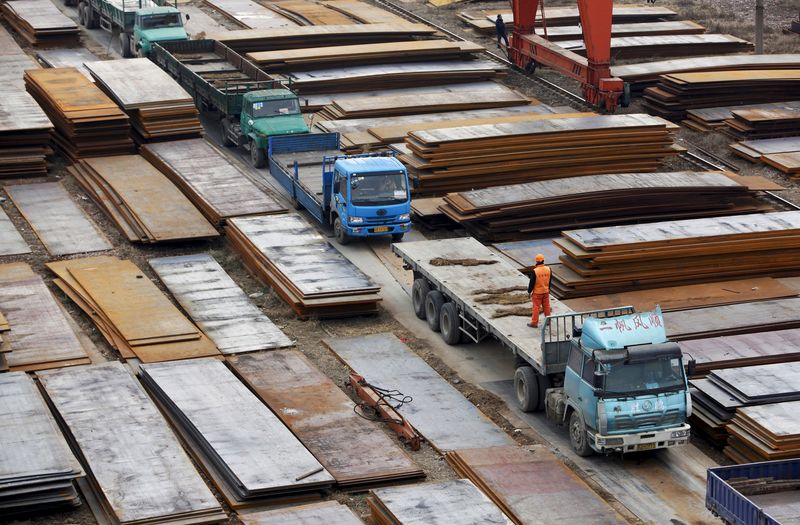By Josephine Mason and Melanie Burton
BEIJING/MELBOURNE, Dec 1 (Reuters) - The historic drop in Chinese steel and iron ore prices on Wednesday could be the first of many as rising exchange fees and lingering liquidity fears quash speculators' appetite for risk and big returns.
But with volumes on both contracts - two of China's largest commodity derivatives markets - also dwindling rapidly as prices head south, traders are bracing for even more volatility.
A glance beyond headline prices reveals a frailer landscape than the months-long, breathtaking rally that propelled prices to multi-year highs would suggest: liquidity has collapsed and turnover has plunged.
As rebar SRBcv1 plunged 9 percent at one stage on Wednesday when it marked its biggest one-day drop on record, turnover was just 3 million lots, the lowest in almost a year and roughly half the daily average of the past year.
In the past month, open interest has halved, falling to as low as 1.88 million lots on Wednesday, the lowest in nearly three years.
That's in marked contrast with March and April when daily trading volumes swelled to as high as 23 million lots and open interest pierced 5 million contracts as speculators piled into these markets, driving prices to 18-month highs.
Iron ore in Dalian slid more than 6 percent on Wednesday, the third largest one-day fall on record, and open interest dropped to the smallest since May.
These are not perfect metrics for measuring the health of a market, and participation has thinned considerably because exchanges have hiked fees and set limits on trading positions for speculators.
Yet the numbers offer an insight into the amount of speculative froth that may still sit atop the world's top commodities market.
Even after Wednesday's tumble, rebar was up 13 percent in November and iron ore gained 23 percent. For the year, iron ore has surged 180 percent and rebar 72 percent.
"People have been piling into commodities, but the scale of the moves don't tally up with the fundamentals," said Macquarie analyst Ian Roper.
TAKING A BREATHER
Both iron ore and steel have some way to go before they return to levels justified by fundamentals, traders and analysts say. For iron ore, a price around $50 per tonne is more in line with ample supplies and steady demand, compared to the roughly $83 price of the benchmark Dalian futures contract DCIOcv1 .
Macquarie's Roper thinks iron ore could range between $45 and $50 per tonne in the next few months as plentiful supplies meet robust demand from infrastructure and construction.
Market participants reckon investors will likely now take a breather, having booked princely profits ahead of the month and year end.
They may return for another stampede in the new year, betting on continued demand as Beijing continues to boost its infrastructure spending.
But with the exchanges using similar tactics to those used to snuff out risk-taking speculation from stocks markets last year, it's not clear if they will have the stomach or deep pockets for it.
"It's no time to be brave. The government has many tools at their disposal," said Bonnie Liu, General Manager of GF Futures in Hong Kong.
<^^^^^^^^^^^^^^^^^^^^^^^^^^^^^^^^^^^^^^^^^^^^^^^^^^^^^^^^^^^ China's iron ore and steel market open interest, volume and price:
http://tmsnrt.rs/2fUsXga China's metals markets hammered by investor selling:
http://tmsnrt.rs/2gvYmDH
^^^^^^^^^^^^^^^^^^^^^^^^^^^^^^^^^^^^^^^^^^^^^^^^^^^^^^^^^^^> (Editing by Manolo Serapio Jr.)
